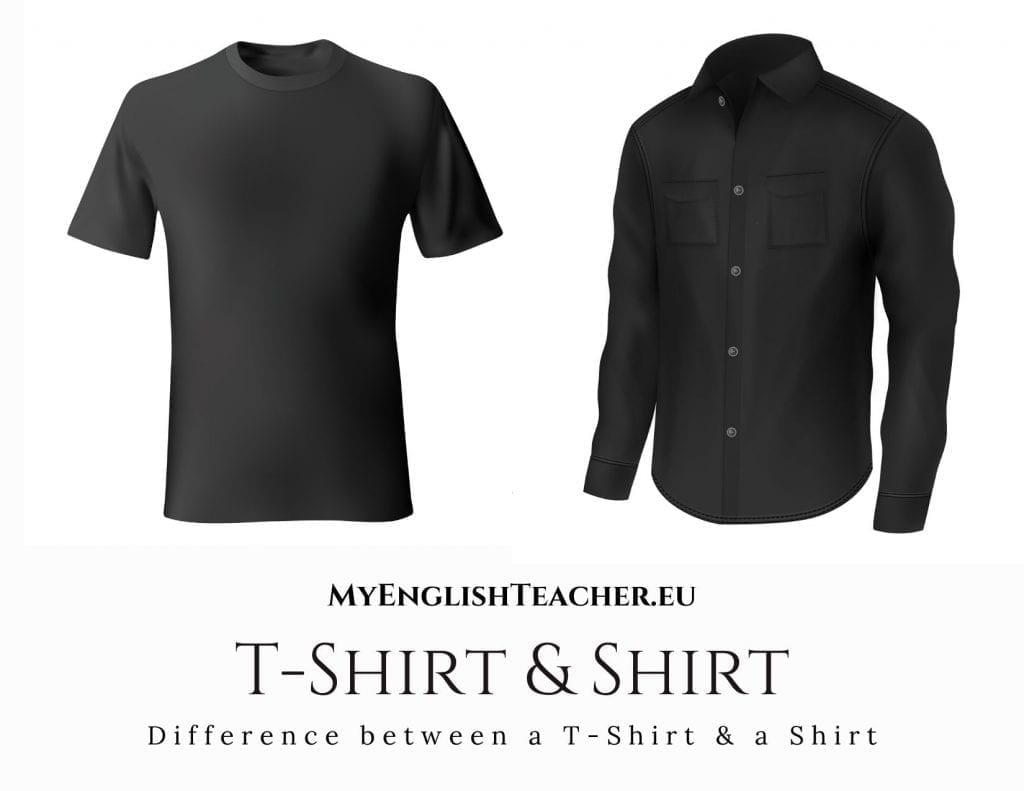
Shirt vs. T-shirt: A Comprehensive Exploration of the Distinctions
In the realm of clothing, the terms "shirt" and "t-shirt" are frequently used interchangeably, leading to some confusion regarding their precise meanings and distinctions. While they share certain similarities, these garments possess unique characteristics that set them apart. This article delves into a comprehensive comparison of shirts and t-shirts, examining their historical origins, design elements, fabric choices, and appropriate contexts for wear.
Historical Evolution: A Tale of Origin and Purpose
The origins of shirts can be traced back to ancient times, where they served as undergarments worn beneath tunics or other outer garments. Over the centuries, shirts evolved in design and purpose, becoming more tailored and visible as standalone pieces. In the 19th century, the iconic button-down shirt emerged, popularized by its practicality and versatility.
T-shirts, on the other hand, have a more recent history. They originated in the early 20th century as undershirts worn by laborers and athletes. These garments were typically made of absorbent cotton and featured a simple, crew neck design. By the mid-20th century, t-shirts had gained widespread popularity as casual wear, becoming ubiquitous in both fashion and culture.
Design Elements: Unveiling the Distinctive Features
Shirts and t-shirts exhibit distinct design elements that contribute to their unique identities. Shirts typically feature a collar, buttons, and a tailored fit that complements formal or semi-formal attire. The collar style varies widely, ranging from classic point collars to spread collars and button-down collars. Shirts also often incorporate cuffs and a pocket or two for added functionality.
In contrast, t-shirts are characterized by their simplicity and comfort. They typically lack a collar, buttons, and cuffs, opting for a crew neck or V-neck design. T-shirts are designed to be loose-fitting and casual, making them ideal for everyday wear or athletic activities. Some t-shirts may feature graphic designs or logos, adding a touch of personalization or brand recognition.
Fabric Choices: Exploring the Textile Landscape
The choice of fabric plays a crucial role in determining the feel, breathability, and durability of both shirts and t-shirts. Shirts are commonly made from a variety of fabrics, including cotton, linen, silk, and synthetic blends. Cotton shirts are soft, breathable, and versatile, while linen shirts offer a crisp, airy feel. Silk shirts exude elegance and drape beautifully, but require more delicate care. Synthetic blends combine the properties of natural and man-made fibers, offering wrinkle resistance and moisture wicking capabilities.
T-shirts are predominantly made from cotton, known for its softness, breathability, and absorbency. Some t-shirts utilize synthetic fabrics like polyester or nylon, which provide moisture-wicking properties and resistance to wrinkles. Blended fabrics, combining cotton with synthetic fibers, offer a balance of comfort and durability. The specific fabric choice depends on the desired feel, functionality, and care requirements.
Appropriate Contexts for Wear: Navigating Style and Etiquette
The appropriate context for wearing shirts and t-shirts varies depending on the formality of the occasion and personal preferences. Shirts are generally considered more formal than t-shirts, making them suitable for business meetings, job interviews, and formal events. The type of shirt chosen should align with the dress code and the desired level of formality.
T-shirts, on the other hand, are casual garments best suited for everyday wear, running errands, or engaging in athletic activities. They can also be dressed up or down with the addition of a jacket or blazer. T-shirts with graphic designs or logos may be more appropriate for casual settings or as a form of self-expression.
Frequently Asked Questions (FAQs)
1. Can shirts be worn as outerwear?
Yes, shirts can be worn as outerwear in casual or semi-formal settings. However, the choice of fabric and details should be considered to ensure appropriateness.
2. Are t-shirts suitable for all occasions?
While t-shirts are versatile, they may not be appropriate for highly formal events or certain professional settings. It’s always best to dress appropriately for the occasion.
3. What is the difference between a polo shirt and a t-shirt?
Polo shirts feature a collar and a buttoned placket, while t-shirts typically have a crew neck or V-neck design. Polo shirts offer a more polished look than t-shirts and can be worn in both casual and semi-formal settings.
4. How should t-shirts be cared for?
T-shirts made from cotton or blended fabrics can be machine-washed and dried, using appropriate settings. Follow the care instructions on the label to ensure longevity.
5. Are shirts always more expensive than t-shirts?
Not necessarily. While shirts made from high-quality fabrics can be more expensive, there are affordable options available. The price of both shirts and t-shirts varies depending on factors such as brand, fabric, and design.
Conclusion
The distinction between shirts and t-shirts lies in their historical origins, design elements, fabric choices, and appropriate contexts for wear. Shirts, with their tailored designs and formal appeal, are suitable for business and formal






